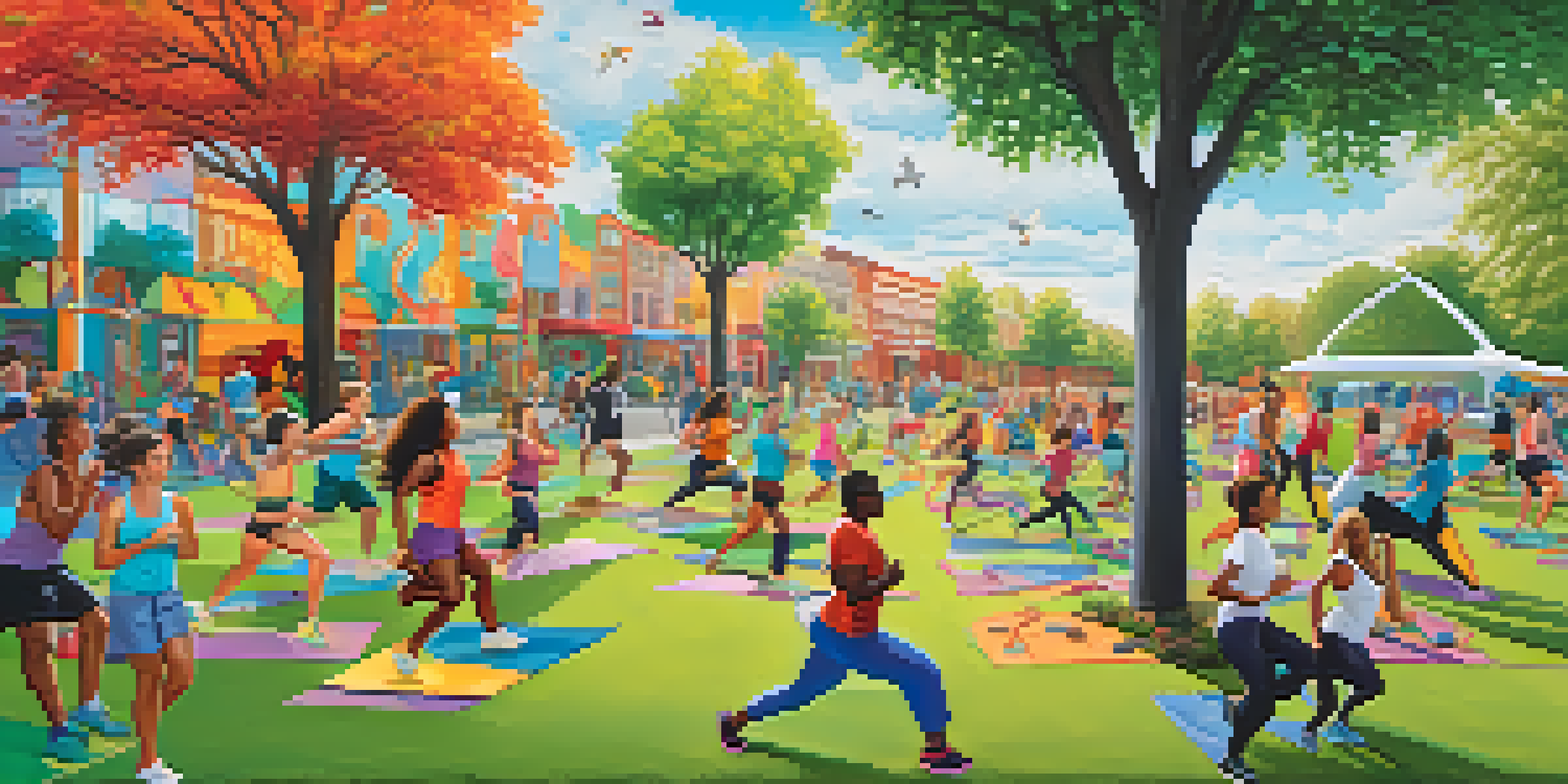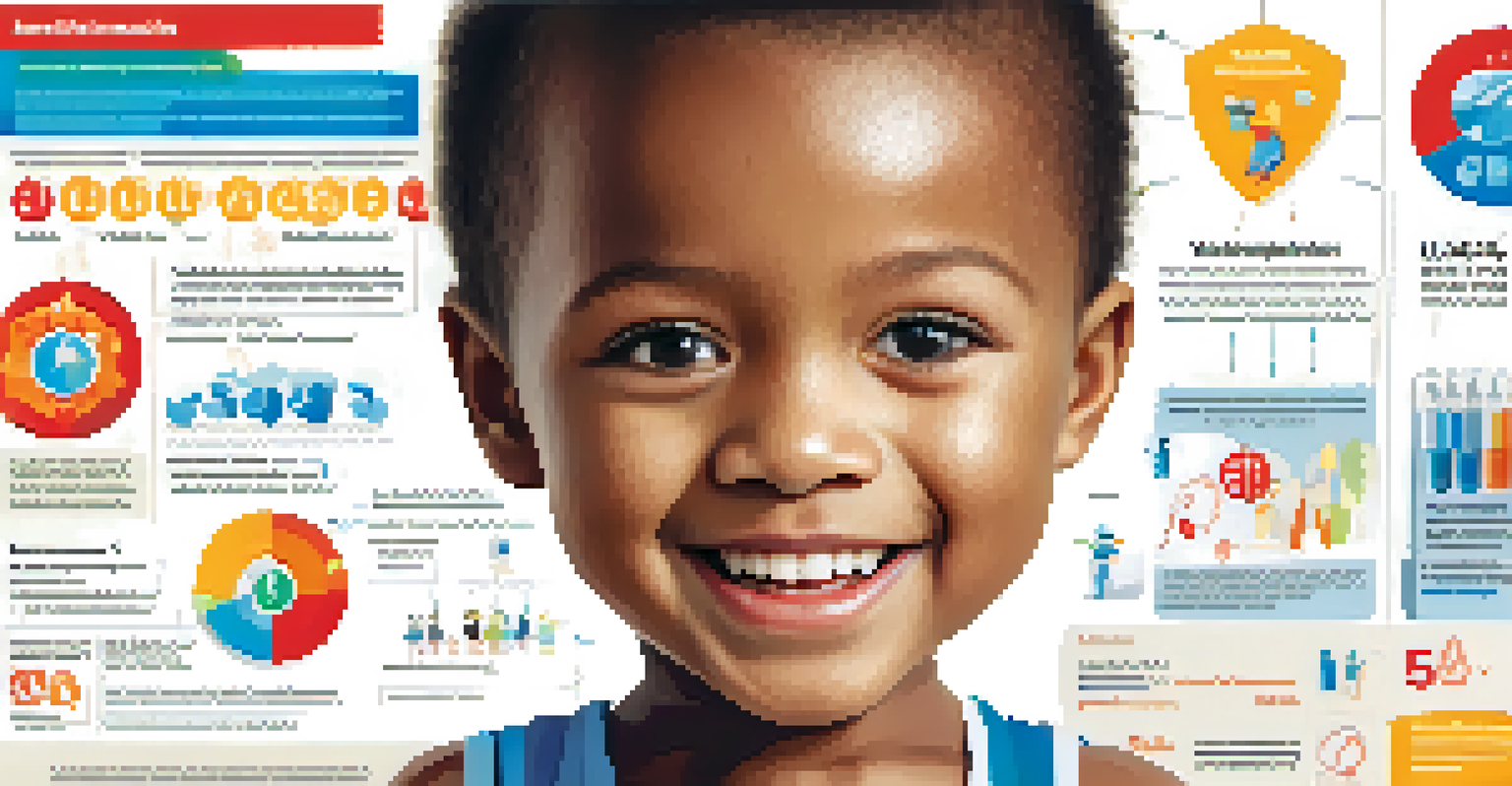Public Health Messaging: The Role of Visual Arts

Understanding Public Health Messaging and Its Importance
Public health messaging is vital for promoting health awareness and behaviors. It encompasses the strategies used to inform and influence individuals and communities about health topics. This communication can take various forms, from verbal messages to written campaigns, but visual elements play a critical role in enhancing their effectiveness.
Art enables us to find ourselves and lose ourselves at the same time.
The goal of public health messaging is to educate and motivate people to make healthier choices. For instance, campaigns about smoking cessation often rely on impactful visuals to convey their messages, making the risks associated with smoking more tangible. By using visuals, these messages become not only more memorable but also easier to understand.
In an age where information overload is common, clear and engaging messaging is crucial. Visual arts can cut through the noise, providing a universal language that resonates with diverse audiences. Whether through infographics or public murals, these creative expressions can significantly impact public perception and behavior.
The Power of Visual Arts in Communication
Visual arts encompass a wide range of creative expressions, including paintings, sculptures, and digital graphics. These forms of art can evoke emotions and convey messages in ways that words alone sometimes cannot. For example, a powerful image can instantly communicate the importance of vaccination, more effectively than a lengthy pamphlet.

The emotional connection that visual arts can create is particularly relevant in public health messaging. Art has the ability to inspire empathy, making people more likely to engage with the subject matter. A moving visual representation of health disparities can prompt action and encourage community support for health initiatives.
Visual Arts Boost Public Health Messaging
Integrating visual arts into public health campaigns enhances communication effectiveness and audience engagement.
Moreover, visual arts can help to break down complex health information into digestible pieces. Infographics that combine visuals with data can simplify statistics and research findings, making them accessible to a wider audience. This clarity is crucial when addressing public health issues, as it can lead to better understanding and informed decision-making.
Case Studies: Successful Visual Arts Campaigns
Several notable public health campaigns have successfully integrated visual arts into their messaging strategies. For instance, the 'Truth' campaign against smoking employed striking visuals and compelling narratives to capture the attention of young audiences. Their use of bold graphics and relatable characters made the campaign not only memorable but also impactful.
A picture is worth a thousand words.
Another example is the 'AIDS: We’re Here For You' campaign, which utilized photography and art to humanize the experiences of those affected by HIV/AIDS. The visual storytelling approach fostered understanding and compassion, encouraging people to seek testing and treatment. This illustrates how art can create an emotional resonance that drives health-seeking behavior.
These case studies highlight the potential of visual arts to enhance public health messaging. By leveraging creativity, campaigns can engage audiences on a deeper level, leading to more effective communication outcomes. The lessons learned from these initiatives can serve as a blueprint for future public health efforts.
The Role of Cultural Context in Visual Arts Messaging
Cultural context plays a significant role in how visual arts are interpreted and received. Health messages must align with cultural values and norms to be effective. For example, a campaign targeting a specific community should incorporate symbols, colors, and themes that resonate with that culture to ensure relatability.
When visual arts reflect the cultural identity of the audience, they foster a sense of belonging and understanding. This cultural alignment can lead to higher engagement levels and a more significant impact on public health outcomes. For instance, using local artists to create murals that address health issues can empower communities and facilitate dialogue.
Cultural Context Matters in Campaigns
Public health messages must align with cultural values to resonate and foster community connection.
It's essential for public health campaigns to consider these cultural dimensions when designing their visual messaging. By doing so, they not only enhance the effectiveness of their communication but also show respect for the communities they serve. This approach contributes to building trust and credibility in public health messaging.
Leveraging Technology for Visual Health Communication
With the rise of digital technology, the opportunities for visual arts in public health messaging have expanded dramatically. Social media platforms, for example, allow for the rapid sharing of visual content, making it easier to reach large audiences. Eye-catching graphics and videos can go viral, spreading important health messages quickly and effectively.
Augmented reality (AR) and virtual reality (VR) are also emerging tools in public health communication. These technologies can create immersive experiences that educate users about health issues through engaging visuals. Imagine a VR simulation that allows individuals to witness the effects of smoking on lung health; such experiences can leave a lasting impression.
The integration of technology with visual arts not only enhances engagement but also allows for more personalized messaging. Tailored visuals that cater to specific demographics can improve the relevance of health campaigns. This adaptability ensures that public health messages resonate with diverse audience segments.
Evaluating the Effectiveness of Visual Arts in Health Messaging
To understand the impact of visual arts on public health messaging, it's essential to evaluate their effectiveness. This can involve measuring changes in knowledge, attitudes, and behaviors before and after a campaign. Surveys and focus groups can provide valuable insights into how well visuals resonate with the target audience.
For example, a study examining a visual arts campaign on nutrition might assess whether individuals increased their fruit and vegetable intake after being exposed to compelling infographics. Such evaluations can help identify which visual strategies are most effective and inform future campaigns.
Technology Enhances Health Communication
Digital tools like social media and AR create immersive experiences that make health information more accessible and impactful.
Continuous assessment also allows public health organizations to refine their messaging approaches. By analyzing data and feedback, they can adapt and improve their visual arts strategies over time. This commitment to ongoing evaluation ensures that public health messaging remains relevant and impactful.
Future Trends in Visual Arts and Public Health Messaging
Looking ahead, the intersection of visual arts and public health messaging is likely to evolve further. As technology advances, new artistic mediums and platforms will emerge, offering fresh opportunities for engagement. For instance, the use of interactive installations could allow communities to engage with health messages in exciting and innovative ways.
Additionally, there is a growing trend toward collaboration between artists and public health professionals. This partnership can lead to creative solutions that not only inform but also inspire action. By working together, these two fields can harness the power of creativity to address pressing health issues.

Ultimately, the future of public health messaging will likely prioritize creativity, cultural relevance, and technological integration. As we embrace these trends, the role of visual arts in promoting health awareness and improving community well-being will continue to grow. This evolution underscores the importance of innovative communication in achieving public health goals.